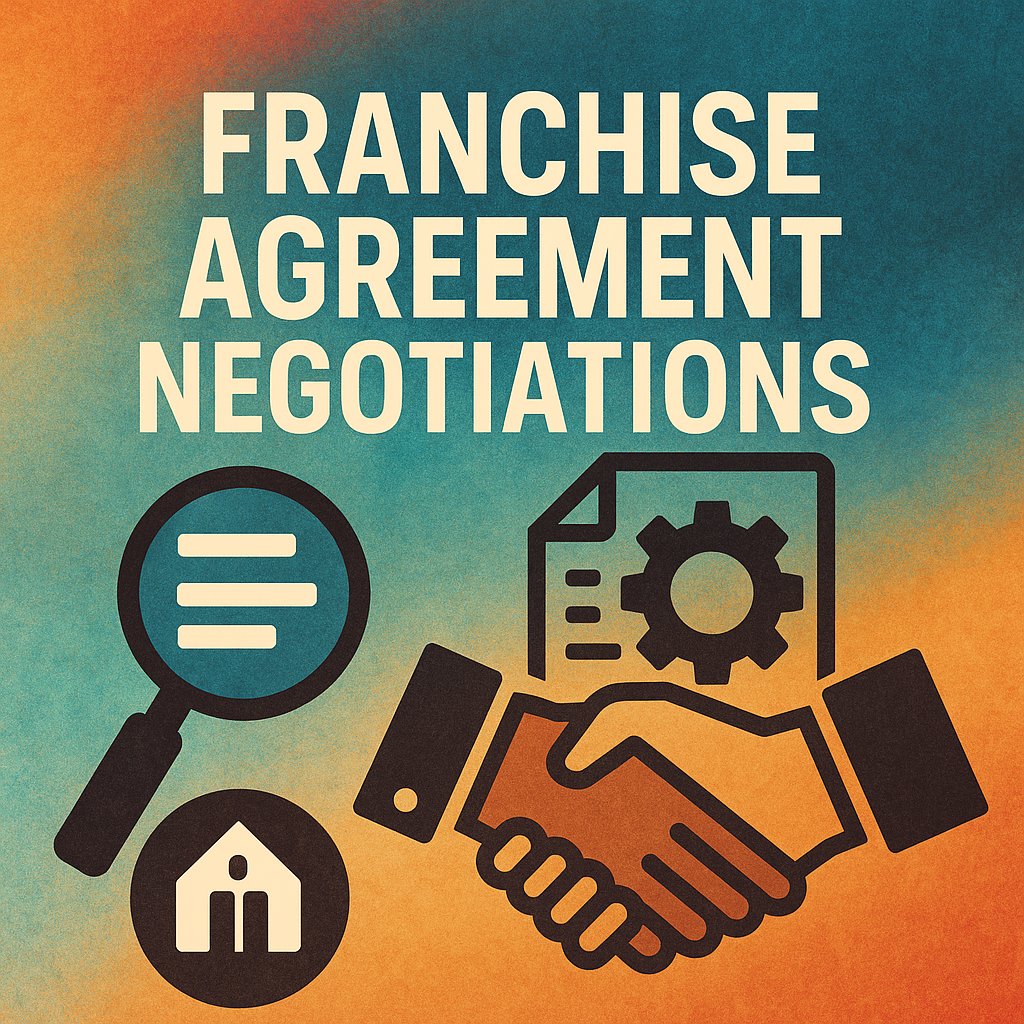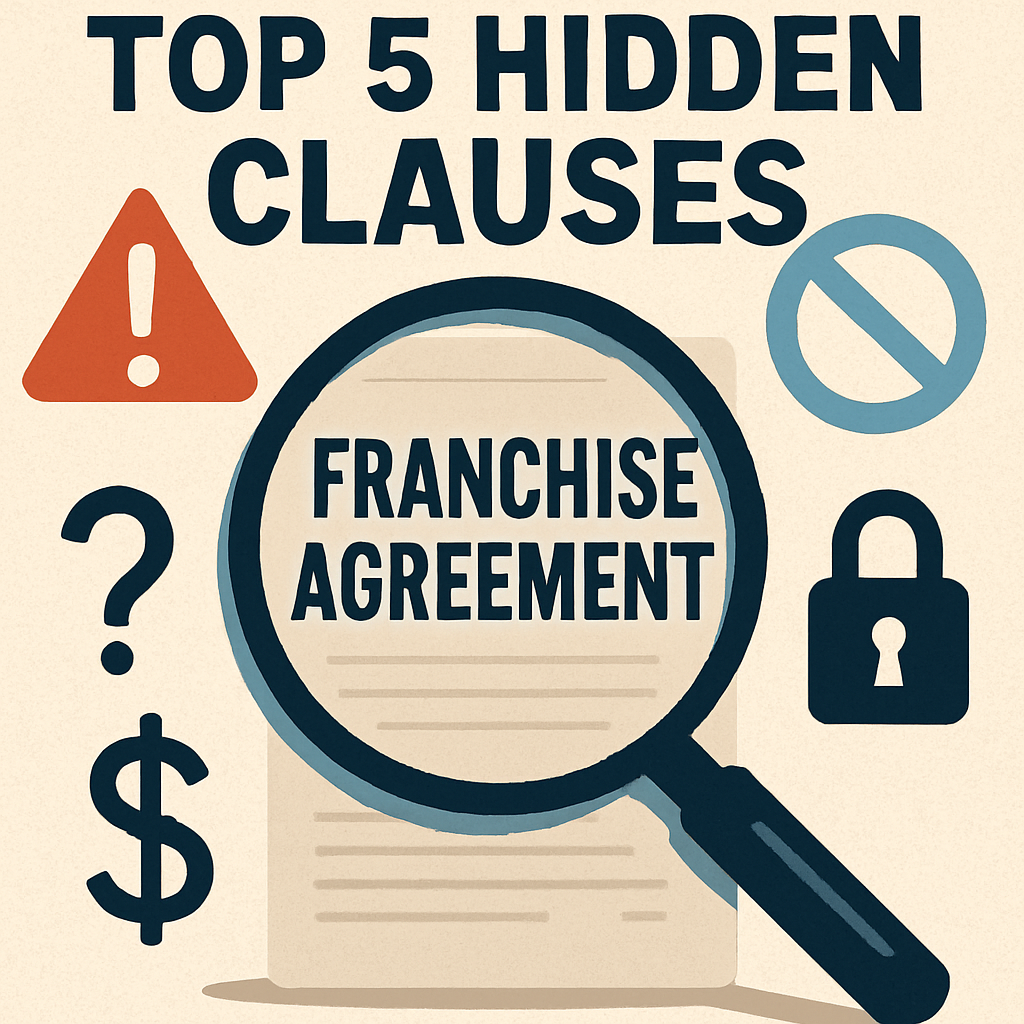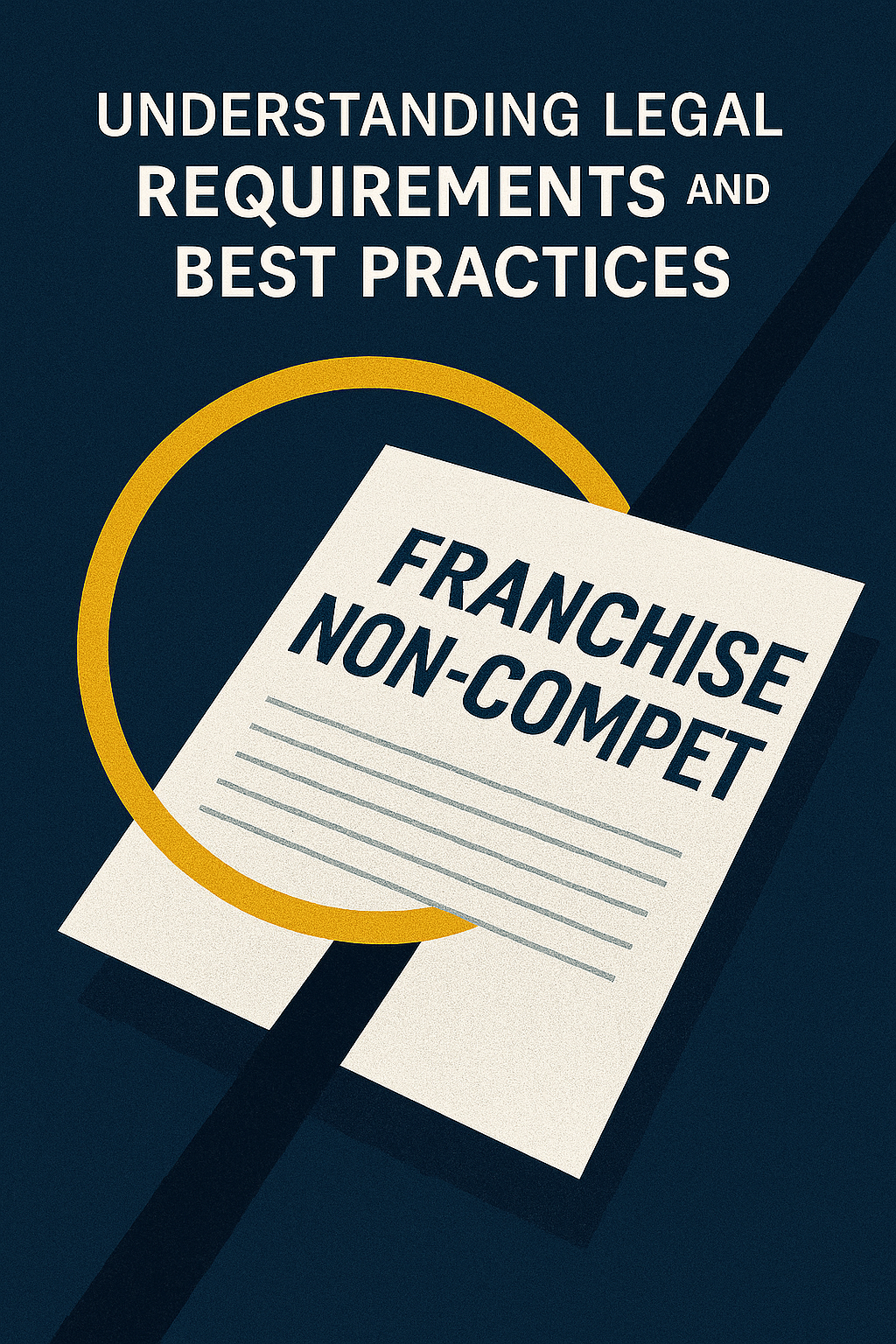In the world of franchising, one crucial document stands between prospective franchisees and their dream of owning their own business: the Franchise Disclosure Document (FDD).
This comprehensive guide provides potential franchisees with invaluable information about the franchisor, the terms and conditions of the franchise agreement, and other essential details.
Understanding the Importance of the Franchise Disclosure Document
Before diving into the intricacies of deciphering your Franchise Disclosure Document, it is crucial to understand its significance.
The FDD serves as a legally mandated document that provides potential franchisees with vital information that can help them make an informed decision about investing in a particular franchise opportunity. It outlines the rights, obligations, and expectations of both parties involved in the franchisor-franchisee relationship.
By carefully reviewing and understanding the contents of the FDD, you can assess the risks and benefits associated with a franchise opportunity.
It is a vital tool that allows you to evaluate the franchisor’s track record, assess the financial health of the franchise, and determine whether the opportunity aligns with your goals and objectives.
The Key Elements of a Franchise Disclosure Document Explained
In order to decode your Franchise Disclosure Document effectively, it is crucial to understand its key elements. The FDD typically consists of multiple sections, each providing valuable insights into different aspects of the franchise opportunity.
The first section, the Franchisor’s Background and Experience, offers important details about the company:
- History
- Key executives
- Past or present litigation
Additionally, this section provides information about the franchisor’s financial statements, giving insight into their fiscal health and ability to support their franchisees.
The Territory Rights and Restrictions section outlines the exclusive rights, if any, that you will be granted for operating the franchise in a specific geographic area. It is important to analyze this section carefully to ensure you understand any limitations or competition that may affect your business’s success.
The Training and Support section is crucial for assessing the level of assistance and guidance provided by the franchisor. Understanding the training programs offered, ongoing support, and communication channels available is vital to your success as a franchisee.
Make sure to evaluate this section thoroughly to ensure the franchisor will provide the necessary resources for your growth and development.
Navigating the Legal Jargon in Your Franchise Disclosure Document
Legal jargon can be intimidating, but when it comes to decoding your Franchise Disclosure Document, understanding the language used is essential.
The document will often contain terms and phrases unique to franchising or legal agreements.
To fully comprehend the contents of the FDD, consider seeking professional advice from an attorney experienced in franchise law. They can guide you through the complex terminology and help you interpret the legal implications of the document.
Alternatively, you can also use online resources or glossaries specific to franchising to demystify any confusing terminology. It is crucial to spend time familiarizing yourself with these terms to ensure you have a clear understanding of the agreements and obligations outlined in the FDD.
Step-by-Step Guide to Analyzing the Financials in Your Franchise Disclosure Document
Analyzing the financial information provided in your Franchise Disclosure Document is paramount to making an informed investment decision. This section of the FDD provides valuable insights into the financial performance of the franchisor and its franchisees.
Take the time to thoroughly evaluate the financial statements.
Such as:
- Income statements
- Balance sheets
-
Cash flow statements
These documents will help you ascertain the stability and profitability of the franchise opportunity.
Additionally, pay attention to any projections or estimates included in the FDD. While these can provide insight into potential earnings, it is important to approach them with caution.
Ways to validate their accuracy and reliability:
- Conducting independent research
- Speaking with existing franchisees
- Consulting financial professionals
Uncovering Hidden Fees and Costs in Your Franchise Disclosure Document
When deciphering your Franchise Disclosure Document, one crucial aspect to focus on is understanding the fees and costs associated with the franchise opportunity. Hidden fees and unexpected costs can significantly impact your profitability and return on investment.
Thoroughly review the Fees section of the FDD, which outlines the initial franchise fee, ongoing royalties, advertising fees, and any other charges you may be responsible for. It is crucial to have a complete understanding of these financial obligations to accurately assess the potential profitability of the franchise.
Furthermore, pay close attention to any additional costs that may arise during the course of operating the franchise.
Such as:
- Equipment purchases
- Inventory requirements
- Leasehold improvements
Factor in these expenses when evaluating the financial viability of the opportunity.
How to Evaluate the Franchisor’s Background and Experience in the Franchise Disclosure Document
Understanding the background and experience of the franchisor is essential when assessing a franchise opportunity. This section of the Franchise Disclosure Document provides valuable information about the company’s history, key executives, and involvement in any litigation or bankruptcy proceedings.
Pay close attention to any red flags or issues raised in this section.
Steps:
- Evaluate the franchisor’s track record, reputation, and stability within the industry
-
Research the company’s history and compare it to other franchisors in the same sector to determine if they are a reliable and trustworthy partner
In addition to the information provided in the FDD, consider reaching out to current and former franchisees to gain insights into their experiences with the franchisor. These firsthand accounts can provide valuable perspective and help you make a well-informed decision.
Assessing the Territory Rights and Restrictions in Your Franchise Disclosure Document
When evaluating a franchise opportunity, understanding the territory rights and restrictions outlined in the Franchise Disclosure Document is crucial. This section provides details about the exclusive rights, if any, that you will be granted for operating the franchise within a specific geographic area.
Thoroughly analyze this section to assess whether the territory offered aligns with your growth plans and market potential.
Factors to consider:
- Population demographics
- Competition
- Market saturation
Ensure that the territory size and potential customer base are sufficient to support your business’s success.
It is also important to understand any restrictions or limitations imposed by the franchisor within your designated territory. Evaluate any non-compete clauses or restrictions on selling goods or services outside of your territory. These limitations may impact your ability to expand or diversify your business in the future.
Understanding the Training and Support Offered by the Franchisor: A Detailed Analysis
One of the key advantages of investing in a franchise opportunity is the training and support provided by the franchisor. Understanding the level of assistance and guidance you can expect is crucial when assessing a franchise opportunity.
The Training and Support section of the FDD provides essential details about the initial and ongoing training programs offered by the franchisor. Evaluate the comprehensiveness and accessibility of the training.
Key information:
- Location
- Duration
-
Cost of training programs
Additionally, assess the level of ongoing support provided by the franchisor. Consider whether they offer regular communication channels, field visits, or mentorship programs.
Access to a strong support network can greatly impact your success as a franchisee and help you navigate any challenges that may arise.
Analyzing Marketing and Advertising Obligations in Your Franchise Disclosure Document
The Marketing and Advertising section of the Franchise Disclosure Document outlines the obligations and expectations regarding marketing efforts and advertising campaigns.
Review this section carefully to understand the franchisor’s advertising requirements and contribution. Evaluate any required fees or mandatory participation in cooperative advertising funds.
Understanding these obligations will help you budget for marketing efforts and ensure you are aligned with the franchisor’s branding and promotional strategies.
Additionally, assess the level of support provided by the franchisor in developing marketing materials and implementing marketing campaigns. Understanding the resources and guidance available in this area is crucial for successfully promoting your franchise and attracting customers.
Evaluating the Terms and Conditions of Your Franchise Agreement within the Disclosure Document
The franchise agreement is a legally binding contract that establishes the rights and obligations of both parties involved. Analyzing the terms and conditions outlined in this agreement is a critical step in deciphering your Franchise Disclosure Document.
Review this section meticulously, paying attention to key aspects such as:
- Term of the agreement
- Renewal options
- Termination clauses
- Any transfer or sale restrictions
Seek legal advice to ensure you understand the implications of each provision and its impact on your rights as a franchisee.
It is imperative to assess whether the terms and conditions of the franchise agreement are fair and reasonable. Evaluate the level of control and flexibility you will have as a franchisee, and consider whether the agreement aligns with your long-term goals and interests.
Common Pitfalls to Avoid When Reviewing Your Franchise Disclosure Document
Deciphering your Franchise Disclosure Document can be a complex task, and there are common pitfalls that potential franchisees should be aware of when reviewing the document.
One common pitfall is failing to allocate sufficient time and attention to thoroughly review and understand the contents of the FDD. Rushing through this process can lead to missed or misunderstood information, increasing the risks associated with the investment.
Another potential pitfall is solely relying on the information provided in the FDD without conducting independent research or seeking professional advice. While the FDD provides valuable insights, it is essential to validate the accuracy of the information and gain additional perspectives to make a well-informed decision.
Lastly, neglecting to speak with current and former franchisees can be a significant mistake.
Their firsthand experiences can offer valuable insights into the franchise opportunity, the level of support provided by the franchisor, and the overall satisfaction of other franchisees within the system.
Interactive Tools to Simplify your Analysis of the Franchise Disclosure Document
Fortunately, there are various interactive tools available that can simplify the process of analyzing your Franchise Disclosure Document. These tools are designed to facilitate comprehension, provide guidance, and ensure thorough evaluation of the FDD.
Online platforms and software specifically tailored for Franchise Disclosure Document analysis can help break down the document into manageable sections, highlighting key areas of importance and prompting critical questions to consider. These tools can streamline the review process and help you navigate the complexities of the FDD.
Additionally, utilizing spreadsheets or templates to organize and analyze financial data and projections can help you make more accurate assessments of the franchise’s viability and profitability.
Such tools can assist in:
- Performing relative comparisons
- Conducting sensitivity analyses
- Projecting future cash flows
Tips for Effective Communication with the Franchisor Regarding Questions on the FDD
When reviewing your Franchise Disclosure Document, it is essential to communicate effectively with the franchisor to clarify any questions, concerns, or areas requiring further explanation.
When reaching out to the franchisor, ensure that your questions are specific and clearly articulated. Referencing specific sections or clauses within the FDD can help facilitate a focused and productive conversation.
Don’t hesitate to ask for clarification or additional documentation when necessary.
Consider compiling a comprehensive list of inquiries before contacting the franchisor to ensure you address all your concerns in a single conversation or email exchange. This approach will help streamline the communication process and ensure you receive all the information you need to make an informed decision.
Case Studies: Real-Life Examples of Success Stories Analyzing Their FDDs
Real-life case studies can provide valuable insights into the process of analyzing and deciphering Franchise Disclosure Documents. Examining success stories of franchisees who have gone through this journey can offer practical examples of best practices and highlight key factors that led to their achievements.
Reading case studies can provide inspiration and guidance, helping you identify potential pitfalls to avoid and strategies to implement. These stories serve as educational tools, providing real-world experiences that can supplement your understanding of the FDD.
Resources and Websites for Further Research on Deciphering your FDD
In addition to the information provided within this interactive guide, there are numerous resources and websites available that can further assist you in deciphering your Franchise Disclosure Document.
Franchise associations, such as the International Franchise Association (IFA), offer educational materials, webinars, and seminars specifically focused on understanding the FDD. These associations can also provide guidance on locating additional resources or connecting with industry experts.
Online platforms and forums that provide valuable insights and perspectives from franchisees, industry professionals, and legal experts:
- Franchise-specific blogs
- Discussion boards
- Social media groups
Participating in these communities allows for the exchange of information and the opportunity to ask questions and seek advice from experienced individuals.
Finally, consult industry publications and academic research on franchising. Books, articles, and academic studies can offer in-depth analysis, case studies, and expert opinions on various aspects of franchising, including the interpretation and understanding of Franchise Disclosure Documents.
In conclusion, deciphering your Franchise Disclosure Document is a critical step in evaluating a franchise opportunity. By thoroughly reviewing and understanding the contents of the FDD, including its key elements, financials, legal jargon, and various sections, you can make an informed investment decision.
Utilize interactive tools, seek professional advice, and learn from real-life case studies to further enhance your understanding and maximize your chances of success in the franchising world.
Reidel Law Firm and Franchisees
As experts in franchise law, we can help you handle the legal aspects of any franchisee issues.
In addition, our legal team can advise you on ways to shore up gaps in the following areas:
- Review personal guaranty and real estate control docs
- Franchisee formation, guidance, and asset protection
- Franchise operating compliance audit and coaching
By effectively managing risk and maximizing opportunities for businesses we answer the needs of our clients wherever and whenever they arise.
Call Reidel Law Firm today at (832) 510-3292 or fill out our contact form. And see how our advice can bring you success in the franchise industry.






